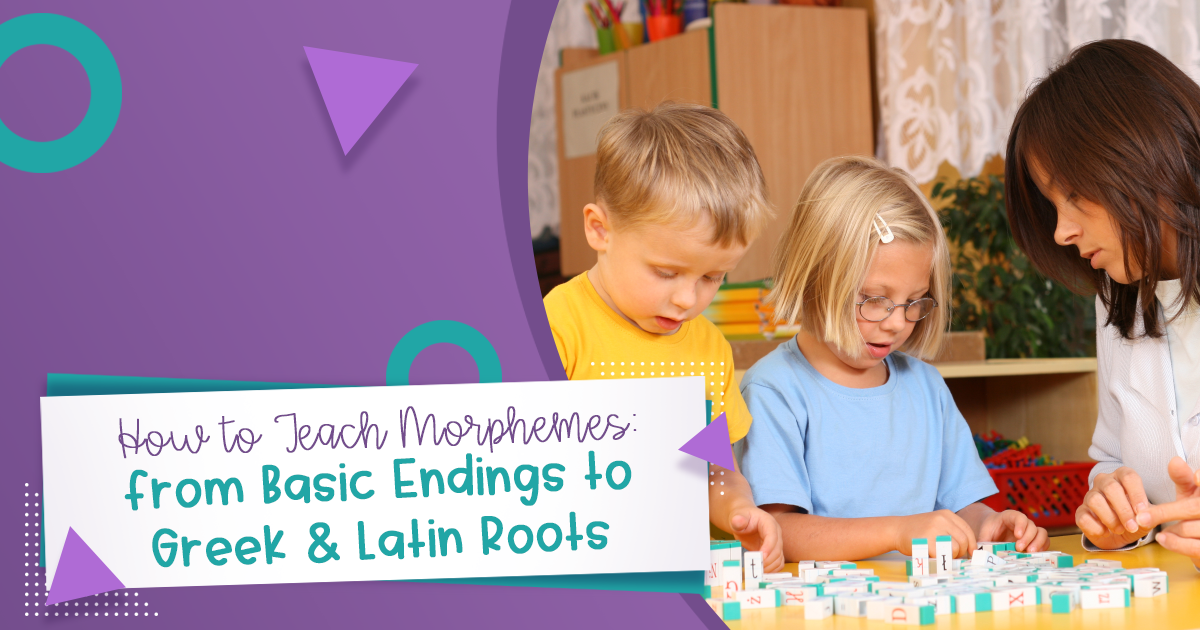
Morphemes might sound a little overwhelming, but they are actually quite simple.
Morphemes are a small units of language. I had this idea that morphemes were these scary Greek and Latin roots. And while those are certainly *part* of it, it’s so much more simple than that. We can help our students become better readers, better spellers, and better decoders by helping them understand how to use small units of language.
Basic Endings
When first introducing the idea of morphemes, I begin with basic endings. I teach my students early on to cover up the –s, –ed or –ing ending that makes the word look long and intimidating. Instead of being intimated by it, we can help them notice it in words that they already know. By doing this, we have nearly doubled their vocabulary and the words they could read.
Compound Words
Compound words are also simple morphemes that can help our students. When faced with a BIG word, I like to ask my students to look for a word that they DO know within that bigger word. These compound words can help unlock the door to looking or listening for chunks of the word that they know.
Contractions
Contractions and compound words work very similarly. I like to spend time helping my students understand why we use contractions. The words included in contractions are often words on the Dolch Sight Word List. Meaning, they are probably very familiar with them and are working to memorize them. They might be able to spot parts of a word that look familiar to help them figure out the contraction.
Prefixes and Suffixes
For readers who are beginning to understand the basic endings, compound words, and contractions, we can begin to introduce prefixes and suffixes. These are often simple and easy for the students to remember. That’s what I love about them! In many cases, they are two or three letters, like in re, un, ly. and pre. By teaching simple prefixes and suffixes, we can allow them to see meaning attached to a small part of a word.
Greek & Latin Roots
I’ll be honest. I used to think Greek and Latin roots were intimidating, and I was SO wrong! Once students have trained themselves to look for chunks of words and are beginning to see meaning attached to parts of words, like re- and un-, you can begin to introduce them to the world of Greek and Latin Roots. These parts of words help them determine meaning and read much larger words!
